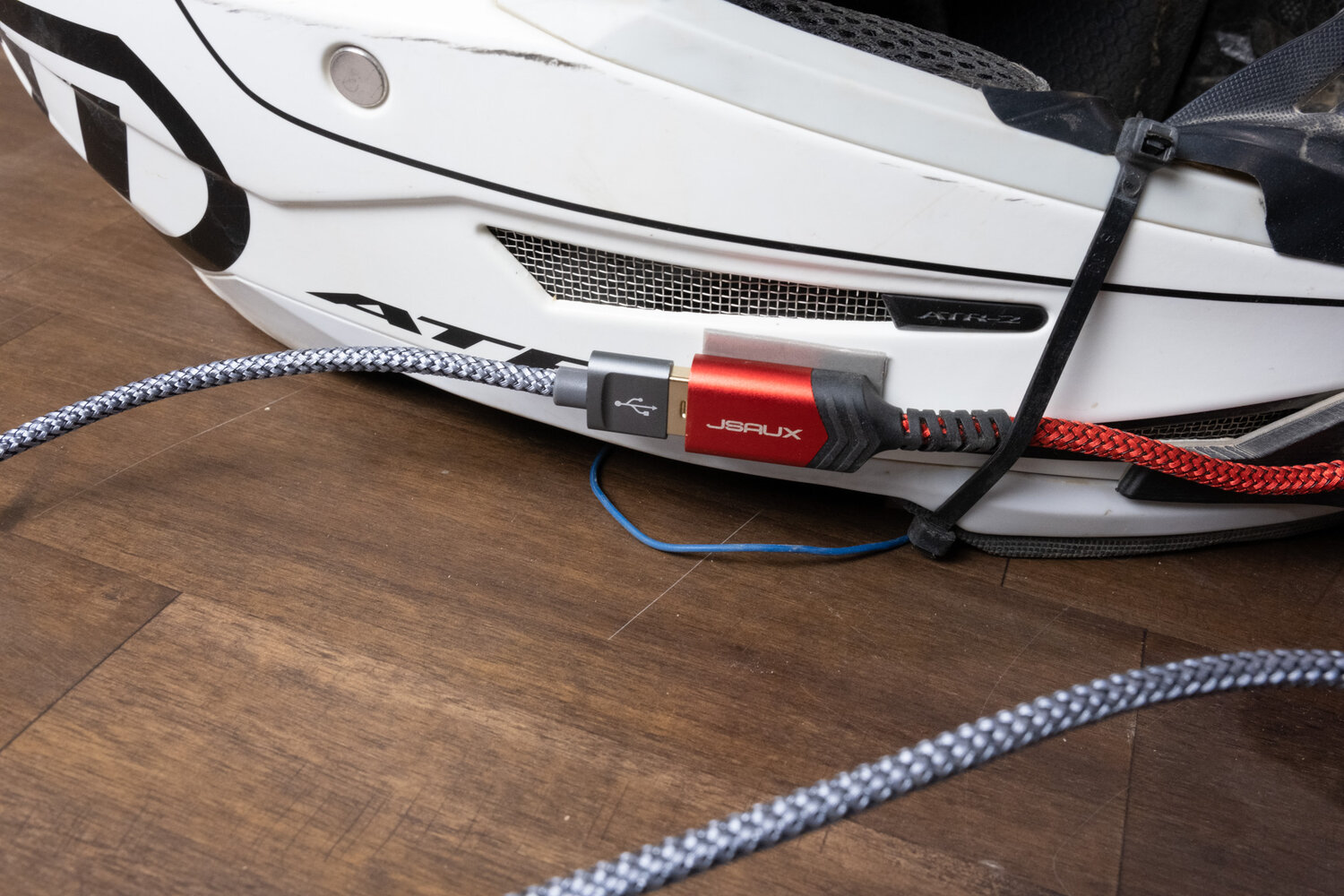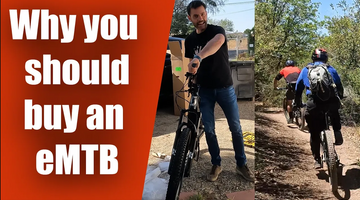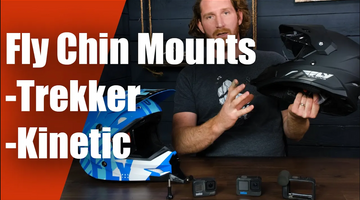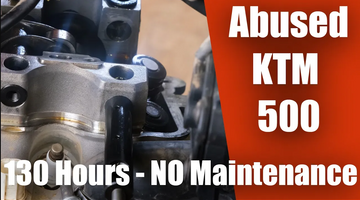Running a GoPro or other action camera on dirt bike rides is a big commitment. You’ve got to make sure it’s turned on at the right moments. You have to think about how far off your helmet it sticks out if your crashing through the bushes or ducking tree branches to avoid losing it to shrubbery. And of course, you’ve got to make sure it’s got power.
For the Hero 5 (ish) through the Hero 8, battery life was about 1 hour per each official GoPro branded internal battery. This means, for a typical trail ride lasting 3-6 hours of runtime, you’d need to carry around 4+ batteries. It also means changing them often, which is a major pain. On the Hero 9, the larger battery size is nice, and you can typically expect about 1.5 hours of runtime per official GoPro branded battery. That cuts down on the number you have to buy, and the frequency of changing them trail-side, but it does not eliminate the issue entirely.

A start/stop approach
To conserve batter life, a lot of riders shut the camera down regularly. Anytime you’re stopped, whenever you’re just cruising to or from the ride, whatever. Personally, this approach has often caused me to miss key footage I would very much have liked to share. Two things can go wrong, 1. You can inadvertently shut the camera off instead of turning it on (or turn it on when you thought you were turning it off), 2. you’re always having to guess when something interesting might happen, and you’re often wrong. Fails in particular often happen when you least expect them, and incidentally make the best shareable content.
In practice, this approach is confusing (did I turn it on, yeah, must have back at that last fork…) and time consuming. It distracts from the riding, and it’s a mixed bag in terms of actually getting the good shots. To solve this, a lot of pro content creators run an external battery pack. These come in all shapes and sizes, and just about any basic battery bank will work. Think cellphone charger, or travel accessory, that’s the battery we’re talking about. All it needs is decent capacity and a USB output (doesn’t even matter which USB plug, you can use an adapter).
Battery Math

Let’s do a little math. For the Hero 9, the battery holds 1750mAh. If that’s 1.5 hours of footage, you can easily calculate how many mAh you need for your typical ride. In my case, I ride as much as 8 hours at a time. 8 / 1.5 = 5.3 (round to 6). That’s 6 Hero 9 equivalent batteries. 6 X 1750 = 10,500 mAh. That’s not bad. Many common cellphone battery banks hold 20k or more.
What about storage?
By running your GoPro off an external battery bank, you can effectively leave it on for your whole adventure. But this raises a secondary issue, video storage. Fortunately, this one is pretty easy to solve. A 256Gb micro SD card can be found all over Amazon for less than $50, from reputable manufacturers too! Even recording in 4K, I’ve never actually filled a card inside a single day of riding. If you are doing very long ADV rides or endurance races, it’s possible you’ll spend more hours on your bike than even these cards can hold, but they come in sizes over 1Tb so it’s unlikely you can’t get a card that suits your riding.
A note about editing
You might be asking yourself, “what the hell am I going to do with 6 hours of 4K footage, most of it boring?”. What we’ve found is that it’s actually no harder to edit good Instagram clips out of 6 hours continuous footage than out of 1 hour all chopped up. This is because if you record most or all of your ride, especially if you leave the camera running all the time so it’s all in order, you’ll have little trouble finding the good stuff just by quickly scanning through what you’ve captured.
If you don’t have sufficient cold storage to keep all that footage around, don’t. There’s nothing saying you have to archive everything you shoot. Cut some clips and dump the leftovers.
Technical setup
There are a few tricks we’ve developed over the years for doing this well. Top of mind is what to do with the extra USB cord attached to your helmet, and where to put the battery pack. For storage, we always have backpacks on anyway (water, tools, food) so it’s not hard to find a top pocket for the battery. I keep mine with my cell phone and wallet.

I use a 6 foot USB A to USB A cord running from the external battery to a short USB A to USB C quick connect link I keep mounted on my helmet. The quick connector then plugs into the media mod of my GoPro (handy backwards facing port on the Hero 8 and Hero 9). This two-cord setup lets me quickly remove the charging cord when taking off my helmet and reduces the stress on put on the GoPro’s USB port (less disconnects and less wire tug). I take up most of the slack by rolling the remaining cord up into the same backpack pocket that holds the battery.

It’s likely that you could get away with a four foot cable, but I have found any shorter than this and you’ll find yourself pulling the cable out of one end or the other if you turn your head hard to one side.

Won’t it get caught on tree branches?
Yes, yes it does. And that’s annoying. But it doesn’t happen as often as I was afraid it might, and it’s only actually pulled out of the GoPro once. I felt it tug, and stopped to get reconnected. I’ll gladly take this inconvenience over missing footage or stopping every hour to change batteries.
You do of course have to remember to disconnect when you take your helmet off, but that’s not hard since you’ll typically feel the cord while getting your helmet strap undone.
A few warnings
GoPros are unfortunately finicky about being run off external power. First, you should keep a battery inside the unit even when running on a cord. If you don’t, and the cord slips or anything comes lose, your camera will just cut instantly, and you might get corrupted files and lose stuff (you probably won’t even know it’s off until the end of your ride).
Also, there are some tricks to getting the camera turned on while running on external power. The important thing to note is that the GoPro will automatically power on WITHOUT any beeps as soon as you plug it in. It will also power itself off after a few minutes of idle time.

On the Hero 9, if you hit the record button within the first couple of seconds after plugging in the camera, it’ll beep like it’s going to record, but will instead freeze up completely (requiring a restart). To avoid this, let it sit idle for 30 seconds or even a couple of minutes after you plug it in, just to be sure it’s actually ready to record. If it does freeze, you can remove the battery and start over, or hold down the side located on/off button for several seconds. It won’t beep until you let up on the button and it actually restarts (it can feel like forever while your holding down the button waiting).
From there, operation is more normal. Though, it’s always a good idea to periodically ask a friend to peek at your GoPro to make sure it’s still recording.
Carry spares
Just like you carry tools and a few key spare parts for your bike, it’s a good idea to think of the failure points in your camera setup and plan ahead for how to make trailside fixes. For example, we recently had a USB cord fail in the middle of filming some great single track up in Big Bear. It took us a little while to figure out what was wrong as the camera would still charge just fine. However, every time we hit record, it would throw up a file error. After eventually swapping the USB cord, we solved the problem. Now we carry extras.
I also pack a small GoPro travel box with a few essentials.
1. Cell phone card reader – to repair corrupted SD cards on the go
2. Extra batteries – just in case
3. Extra mounting screws
4. A small assortment of adaptors and cables
Solar powered?
For longer trips, we strongly recommend buying a solar panel. Some come with battery packs built in, others just charge directly to a device. A good panel folds up to a fairly small package but can still charge a phone + GoPro + smart watch in just a few hours of sunshine. For overnight trips these are key as they’ll not only let you top off your GoPro power system but also keep your cell phone and other gadgets ready to go.
A note about mounting your GoPro
If you’ve read this far, you’re probably serious about running your GoPro like a pro and getting the good shots so let me briefly pitch our line of action camera chin mounts. Our mounts are specifically designed to perfectly fit on each model of helmet we cover. Lightweight 3D printed units can hold up to 20lbs of weight (far more than a GoPro) and will not damage your helmet. They attach using high-tech 3M double sided tape for a perfect yet removable fit.
Find your helmet mount in our shop>. If you’ve got any questions, or just want more info on how we use our GoPros like Pros, drop us a line and we’ll get back to you ASAP!!










2 comments
Overheating is def an issue with GoPros (and DSLR cameras if you’re shooting video with them). We’ve found that if we’re shooting inside, in the heat (like in the shop/garage) all our GoPros will overheat and shut down eventually (how fast depends on the temp, the resolution you’re using, media mod installed, airflow, etc).
However, we have never had any issue with any of our models overheating while riding. We have run even the Hero 10 (which is what we mostly use these days) in 100 degree desert sun for hours and not had an issue on trail. There are lots of blogs and videos out there about how the Hero 10 overheats super easy. I think that’s mostly if it’s shooting in 5K mode. We shoot 4K and, again on trail, have never had an issue while riding.
Regarding running them without batteries, we always include a battery because it’s a nice failsafe. We’ve found the cord can be finnicky and if you bump it, you can cut the charging. It’s nice to have a battery for it to fall back on so you don’t lose footage.
Do you have any heat issues running on the external battery? My gopros over heat when I plug them into the USB port on my boat. I’ve never been able to get them to work without a battery in them either.